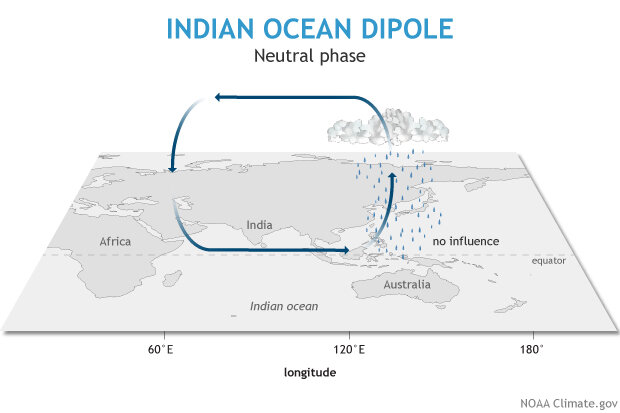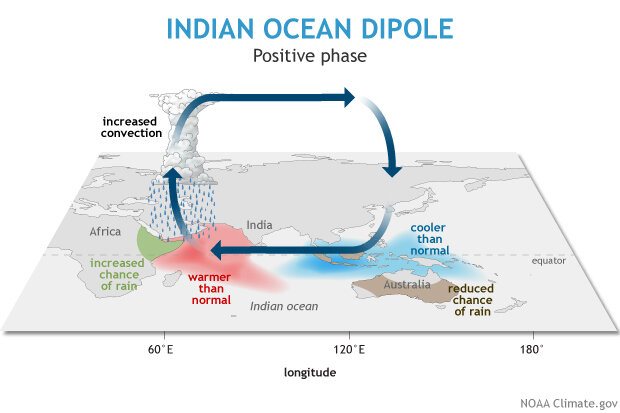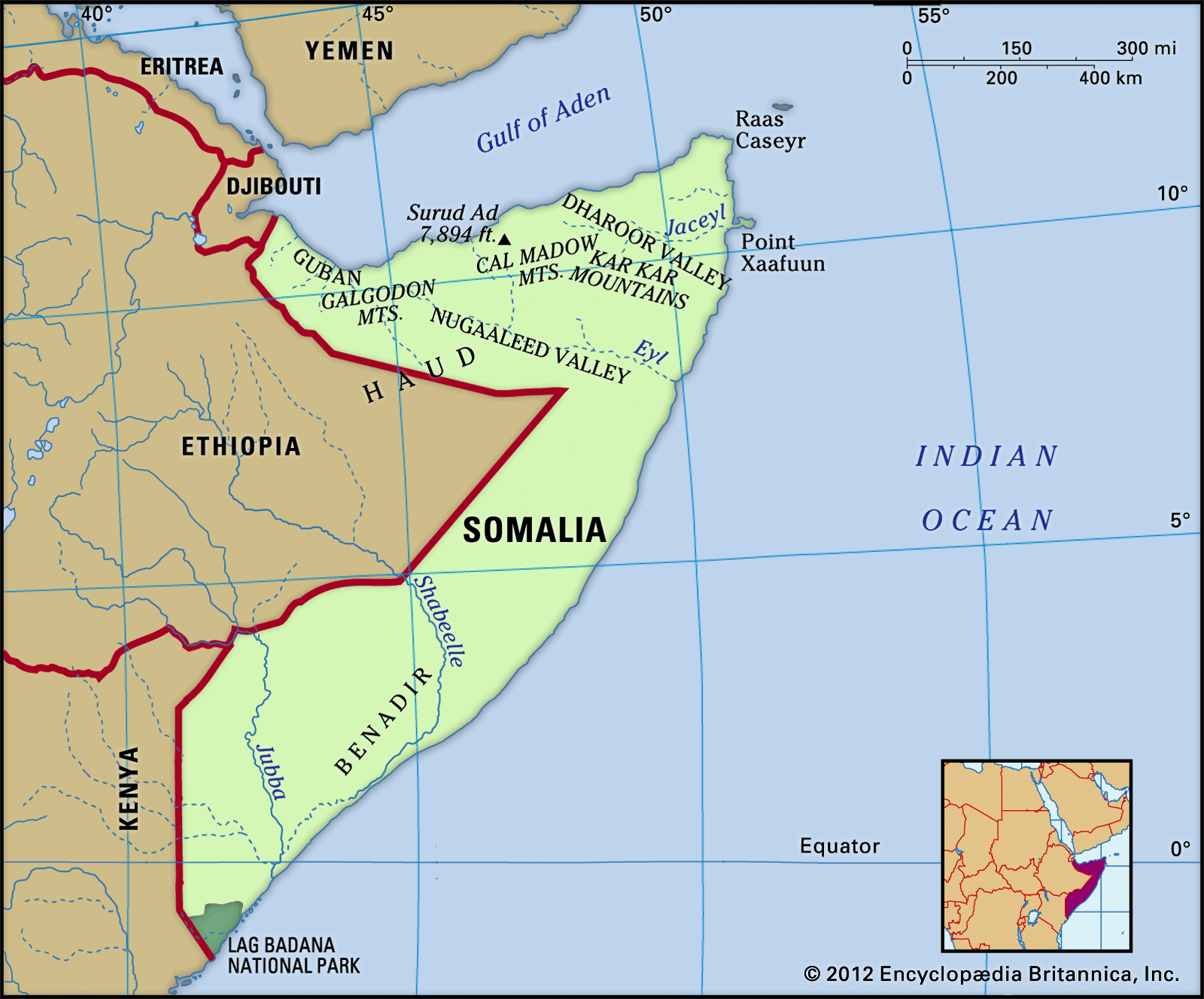Geography
Flood in Somalia
- 20 Nov 2023
- 8 min read
For Prelims: Flood in Somalia, U.N. Office for the Coordination of Humanitarian Affairs (OCHA), Floods, El Nino, Indian Ocean Dipole.
For Mains: Flood in Somalia, Atmospheric Circulation & Weather Systems.
Why in News?
Recently, the U.N. Office for the Coordination of Humanitarian Affairs (OCHA), has described Floods that uprooted hundreds of thousands of people in Somalia and neighbouring countries in East Africa following a historic drought as a Once-in-a-Century event.
- The primary cause of the floods in Somalia has been attributed to torrential rainfall, exacerbated by climatic phenomena like El Niño and the Indian Ocean Dipole.
- The impact isn't confined to Somalia alone; neighboring Kenya has also been affected, with the death toll reaching 15 and regions like Mombasa, Mandera, and Wajir experiencing significant challenges due to the floods.
What is the Office for the Coordination of Humanitarian Affairs (OCHA)?
- OCHA is the part of the United Nations Secretariat responsible for bringing together humanitarian actors to ensure a coherent response to emergencies.
- OCHA also ensures there is a framework within which each actor can contribute to the overall response effort.
What is El Nino?
What is the Indian Ocean Dipole (IOD)?
- IOD or Indian Nino:
- IOD, sometimes referred to as the Indian Nino, is similar to the El Nino phenomenon, occurring in the relatively smaller area of the Indian Ocean between the Indonesian and Malaysian coastline in the east and the African coastline near Somalia in the west.
- The El Nino is the warmer-than-normal phase of the El Nino Southern Oscillation (ENSO) phenomenon, during which there are generally warmer temperatures and less rainfall than normal in many regions of the world, including India.
- One side of the ocean, along the equator, gets warmer than the other.
- IOD is said to be positive when the western side of the Indian Ocean, near the Somalia coast, becomes warmer than the eastern Indian Ocean.
- It is negative when the western Indian Ocean is cooler.
- IOD, sometimes referred to as the Indian Nino, is similar to the El Nino phenomenon, occurring in the relatively smaller area of the Indian Ocean between the Indonesian and Malaysian coastline in the east and the African coastline near Somalia in the west.
- Mechanism:
- Neutral Phase:
- The air circulation in the Indian Ocean basin moves from west to east, that is from the African coast towards the Indonesian islands, near the surface, and in the opposite direction at the upper levels. That means the surface waters in the Indian Ocean get pushed from west to east.
- In a normal year, warmer waters in the western Pacific near Indonesia cross over into the Indian Ocean and make that part of the Indian Ocean slightly warmer. That causes the air to rise and helps the prevailing air circulation.
- Neutral Phase:
- Negative IOD:
- In the years when the air circulation becomes stronger, more warm surface waters from the African coast are pushed towards the Indonesian islands, making that region warmer than usual. This causes hotter air to rise, and the cycle reinforces itself.
- This is the state of negative IOD.
- Positive IOD: Air circulation becomes slightly weaker than normal. In some rare cases, the air circulation even reverses direction. The consequence is that the African coast becomes warmer while the Indonesian coastline gets cooler.
- A positive IOD event is often seen developing at times of an El Nino, while a negative IOD is sometimes associated with La Nina.
- During El Nino, the Pacific side of Indonesia is cooler than normal because of which the Indian Ocean side also gets cooler. That helps the development of a positive IOD.
- Impact of IOD:
- In the Indian Ocean, IOD exhibits an ocean-atmosphere interaction that closely resembles the fluctuations observed during El Niño events in the Pacific Ocean. However, the IOD is considerably less powerful compared to El Niño, resulting in relatively minimal impacts.
- A positive IOD helps rainfall along the African coastline and also over the Indian sub-continent while suppressing rainfall over Indonesia, southeast Asia and Australia. The impacts are opposite during a negative IOD event.
What are the Key Facts About Somalia?
- Location:
- Somalia is situated in the Horn of Africa, bordered by the Gulf of Aden to the north, the Indian Ocean to the east, Kenya and Ethiopia to the west, and Djibouti to the northwest.
- Somalia is situated in the Horn of Africa, bordered by the Gulf of Aden to the north, the Indian Ocean to the east, Kenya and Ethiopia to the west, and Djibouti to the northwest.
- Capital:
- Mogadishu is the capital and largest city in Somalia.
- Terrain:
- The country features diverse landscapes including arid plains, plateaus, highlands, and mountain ranges.
- The northern part of Somalia includes the Golis Mountains, while the southern region is characterized by savannas and grasslands.
- Climate:
- Somalia experiences a predominantly arid to semi-arid climate with hot temperatures and limited rainfall. The coastal areas have a more moderate climate due to the influence of the Indian Ocean.
- Islands:
- Somalia has several islands off its coast, including the Bajuni Islands and the Socotra Archipelago, which includes islands like Socotra, Abd al Kuri, and Samha. However, the Socotra Archipelago is administered by Yemen.
UPSC Civil Services Examination, Previous Year Question (PYQ)
Prelims
Q. With reference to ‘Indian Ocean Dipole (IOD)’ sometimes mentioned in the news while forecasting Indian monsoon, which of the following statements is/are correct? (2017)
- IOD phenomenon is characterised by a difference in sea surface temperature between tropical Western Indian Ocean and tropical Eastern Pacific Ocean.
- An IOD phenomenon can influence an El Nino’s impact on the monsoon.
Select the correct answer using the code given below:
(a) 1 only
(b) 2 only
(c) Both 1 and 2
(d) Neither 1 nor 2
Ans: (b)
Mains
Q. Most of the unusual climatic happenings are explained as an outcome of the El-Nino effect. Do you agree? (2014)









